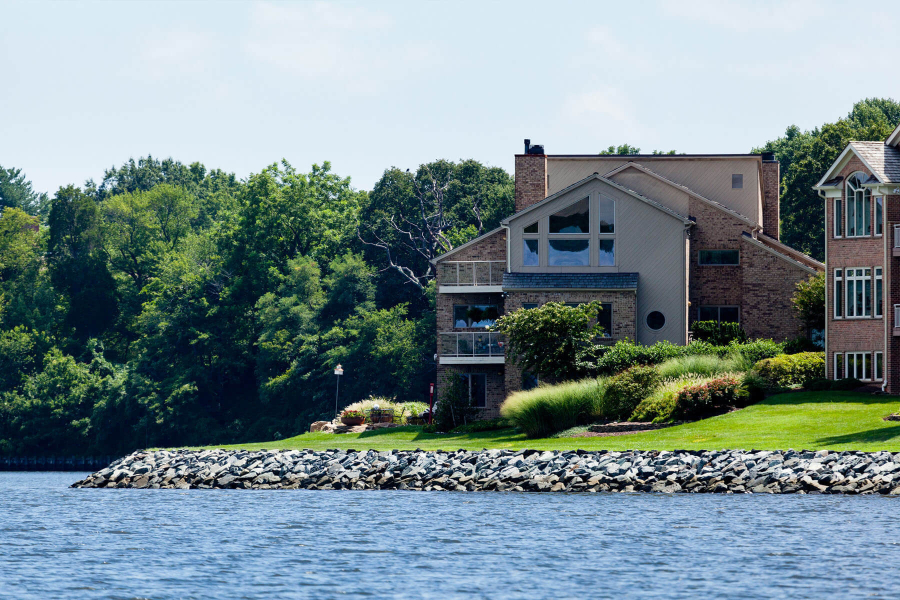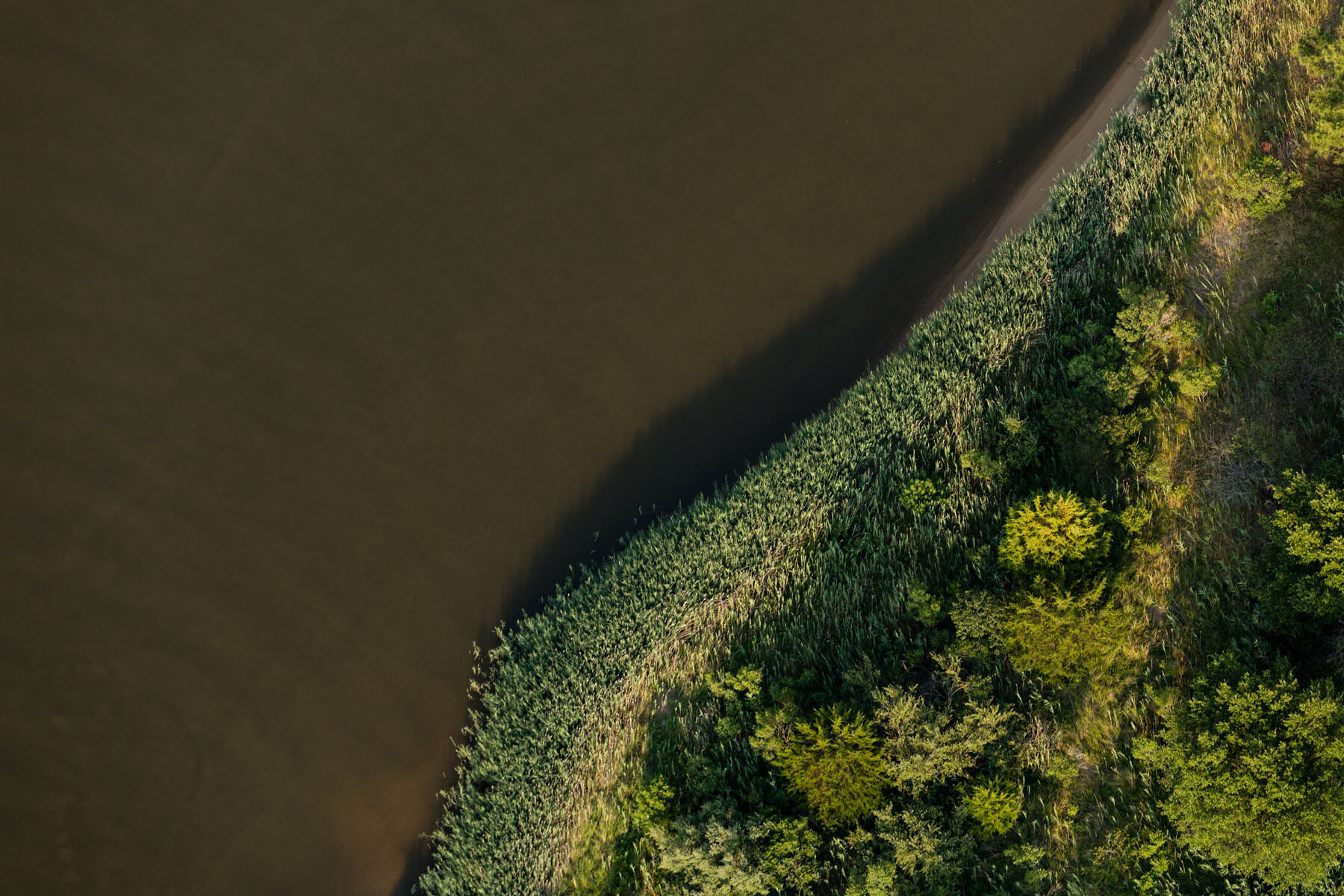By the Numbers: 1,700
The length, in miles, of Chesapeake Bay shoreline that has been hardened

The Chesapeake Bay’s shoreline is a dynamic ecosystem where plants, fish and shellfish find habitat and protection from predators. As development expands to make room for our growing population, these shorelines are often shaped into retaining walls that separate land from water. But a recent review of scientific research has found that hardened shorelines have an adverse effect on aquatic plants, small-bodied fish, shellfish and birds, which means alternative methods of stabilizing our shorelines could prove critical to preventing erosion while protecting the environment around us.
Where forests, wetlands and natural beaches border the water, underwater grasses, bottom-dwelling organisms and young fish and shellfish find habitat. Wading birds visit these shallow waters to find food, and large fish enter and exit marshes and wetlands with changes in the tide. There are more than 10,000 miles of tidal shoreline along the Chesapeake Bay, but the Virginia Institute of Marine Science (VIMS) estimates 1,700 miles of tidal shoreline in Maryland and Virginia have been hardened. (Because Maryland’s shoreline has not been surveyed since the mid-2000s, the actual length of hardened shoreline is likely higher than this estimate.)

Bulkheads, riprap revetments and other hardened shorelines are meant to stop land from washing into the water. But the negative impacts of this method of coastal management could outweigh the benefits. Research has shown:
- Hardened shorelines push incoming waves away from the shore. The resulting turbulence scours sediment from the bottom and deepens the water so it no longer supports underwater grasses or protects small-bodied fish and shellfish from larger predators.
- Hardened shorelines are associated with smaller, less diverse and less abundant bottom-dwelling organisms, as well as less abundant fish and shellfish.
- Hardened shorelines are associated with weaker communities of water birds. In fact, water birds can be negatively affected when a stretch of shoreline exceeds a threshold of just eight percent bulkhead. Water birds are also negatively affected when a shoreline exceeds a threshold of five percent phragmites, and riprap revetments are positively associated with the invasive reed.
Through the Chesapeake Bay Watershed Agreement, the Chesapeake Bay Program has highlighted the importance of forage fish and invertebrates—like the small-bodied fish, shellfish and bottom-dwelling organisms affected by hardened shorelines—and of fish habitat—like the shallow waters where young fish find refuge. Later this year, our Fish Habitat and Forage action teams will begin work to establish a “shoreline threshold” that will help planners determine the length of shoreline that should remain natural if we are to sustain the suite of benefits these shorelines provide.
If a stone or wooden wall is the “hardest” shoreline, a line of vegetation sits at the other end of the shoreline management spectrum. Living shorelines present an alternative to hardened shorelines that would promote healthy nearshore ecosystems. Living shorelines often include marsh grass, riparian plants, underwater grasses and offshore oyster reefs or other breakwaters that lessen wave energy before it reaches land. Living shorelines cost less than hardened shorelines to install and maintain, are more resilient than hardened shorelines against strong storms and are hypothesized to perform at least as well as conventional methods of erosion control while providing adding benefits to water quality and wildlife habitat. For this reason, living shorelines could be a critical way to protect nearshore ecosystems and the shoreline itself.
Learn more about our work to understand forage species and improve the effectiveness of fish habitat conservation.

Comments
Greetings. What percentage of riverine shoreline is hardened? If the Bay is 17% it seems rivers would be much higher
I urge you to prominently note that hardened shorelines can impair or eliminate public access to the Bay from publicly owned waterfront sites. The Bay program needs to aggressively advocate for regulatory and financial policies that create a strong priority for preservation and creation of public access. In the long run, the inability of the public to enjoy safe convenient Bay access may be the greatest threat to sustainable restoration.
Maryland already has the 2008 Living Shoreline Protection Act. It forbids coastal property owners from installing a hard structure at water’s edge unless they can prove that a softer approach won’t work.
Thank you!
Your comment has been received. Before it can be published, the comment will be reviewed by our team to ensure it adheres with our rules of engagement.
Back to recent stories